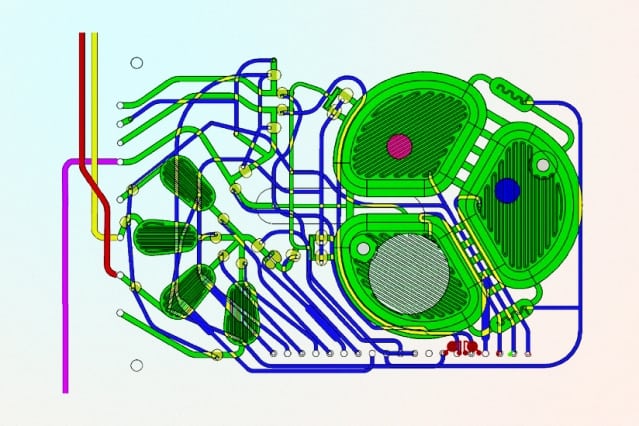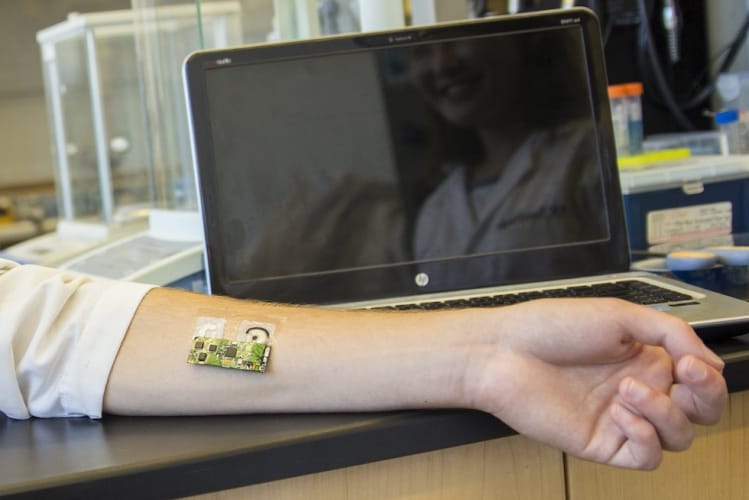 Andrew Wade, senior reporter
Andrew Wade, senior reporter
Buried amongst the wholesale bad news from the PMI and Mark Carney’s financial storm warning, there were a handful of intriguing biomed stories that surfaced this week.
One, in particular, was a welcome shot in the arm for the UK in this post-Brexit fallout. On Monday, we learned that Google and GSK are partnering on Galvani Bioelectronics, a new venture that will focus on bioelectronic medicine, and which will be headquartered at GSK’s Stevenage R&D centre. The nascent technology is based on treating diseases with electrical signals that manipulate the nervous system, and could potentially be used to tackle conditions like arthritis, asthma and diabetes.

It’s something that GSK has been investigating since 2012, and the pharmaceutical giant will take a 55 per cent stake in the new company. Google brings expertise on microelectronics, software and data. And when the biggest names in tech and pharma get together for a brand new approach to medicine, it’s worth sitting up to take notice.
GSK is a blue chip behemoth that by its nature must have caution in its DNA. Google is the epitome of the fail-fast/learn-fast philosophy that has helped make Silicon Valley the de facto capital of global power. It’s an interesting confluence of companies from very different worlds, where each is bringing a wealth of specialised knowledge to the table.
GSK’s history, in the guise of predecessors Glaxo Wellcome and SmithKline Beecham, stretches back further than this grizzled publication, all the way to the 1840s. Google was founded less than 20 years ago, but as we all know, has grown exponentially from an internet search engine to a multifaceted technology company with its fingers in all kinds of pies. One of those fingers is Verily, formerly known as Google Life Sciences, and it’s this part of the business that will be teaming with GSK on the new project.

Initially there will be just 30 scientists, engineers and clinicians working for Galvani, with a planned investment of £540m over the next seven years. Bringing the technology to market will likely take a decade, but the potential of bioelectronics is such that we could see the sector grow massively in the near future. As Moncef Slaoui, GSK’s head of vaccines and Galvani’s new chairman, pointed out, bioelectronics offers an entirely new therapeutic model that could soon be working in tandem with traditional medicine and vaccines.
Another of this week’s stories reminded us that traditional medicine is not quite for the scrapheap just yet. Researchers from MIT unveiled a new biomed device that can produce pharmaceuticals on demand, and could potentially be used in war zones or remote parts of the world. The drug industry relies on huge manufacturing plants and intricate supply chains, and getting the right medication to the right people on time doesn’t always happen, as we are all very much aware

MIT’s new system, developed with funding from DARPA, uses a programmable strain of yeast that can be mixed with a variety of chemical triggers in a microbioreactor, which can then be passed through filters to guide the desired type of protein growth. Although still in the early stages of research, the portable system could be a key step in decentralising pharma production.
“Imagine you were on Mars or in a remote desert, without access to a full formulary,” said researcher Tim Lu, an associate professor of biological engineering, electrical engineering, and computer science, and head of the Synthetic Biology Group at MIT’s Research Laboratory of Electronics. “You could programme the yeast to produce drugs on demand locally.”

Finally, this week also saw the appearance of a technology that our news editor has classed as slightly sinister. UC San Diego’s wearable sensor can detect a person’s alcohol levels via their sweat, and can transmit the data wirelessly to a mobile device. The sensor consists of a temporary tattoo that sticks to the skin, induces sweat and electrochemically detects the alcohol level, alongside a small circuit board that transmits the information. Its creators say it was developed to prevent people driving while intoxicated, by linking the reading to the car’s ignition. Here at The Engineer, however, we’re convinced it’s a precursor to sirens going off as soon as you’ve absorbed your second pint. Now that's a future that's genuinely terrifying.





Project to investigate hybrid approach to titanium manufacturing
Sadly they will not be ordering any more presses from Wilkins & Mitchell http://www.historywebsite.co.uk/articles/Darlaston/WM.htm